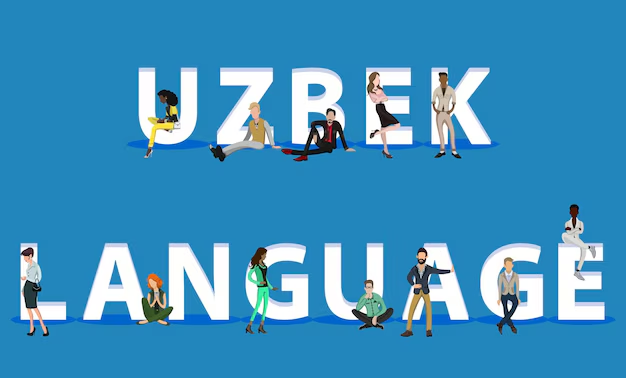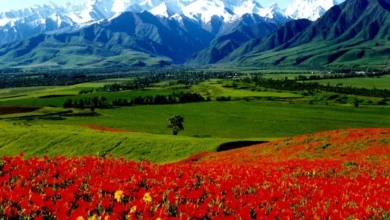
Introduction
Uzbekistan, located in the heart of Central Asia, is a cultural crossroads that reflects its diverse history and rich heritage. Influences from ancient Silk Road trade, Islamic empires, Soviet rule, and modern independence have shaped the country’s linguistic and religious landscape. This guide explores the primary languages and religions of Uzbekistan, offering insight into the cultural fabric of this fascinating nation.
Languages in Uzbekistan
1. Uzbek (Official Language)
- Overview:
Uzbek is the official language of Uzbekistan and is spoken by the majority of the population. It is a Turkic language written in the Latin script since the 1990s, though Cyrillic is still used in some contexts. - Key Features:
- Related to Turkish, Kazakh, and Kyrgyz.
- Known for its rich vocabulary influenced by Persian and Arabic.
- Where It’s Spoken:
- Nationwide, in daily life, government, media, and education.
2. Russian
- Overview:
Russian is widely spoken, particularly in urban areas and among older generations. It serves as a second language for many and is often used in business, science, and inter-ethnic communication. - Key Features:
- Legacy of the Soviet era.
- Commonly used in official documents and signage alongside Uzbek.
- Where It’s Spoken:
- Primarily in cities like Tashkent, Samarkand, and Bukhara.
3. Tajik
- Overview:
Tajik, a dialect of Persian, is spoken by the ethnic Tajik minority, particularly in the regions bordering Tajikistan. - Key Features:
- Shares similarities with Dari and Farsi.
- Used in informal and community settings.
- Where It’s Spoken:
- Predominantly in Samarkand, Bukhara, and the Fergana Valley.
4. Karakalpak
- Overview:
Karakalpak is the regional language of the Karakalpakstan autonomous republic in western Uzbekistan. - Key Features:
- Closely related to Kazakh.
- Officially recognized alongside Uzbek in Karakalpakstan.
- Where It’s Spoken:
- Exclusively in the Karakalpakstan region.
5. English and Other Languages
- Overview:
English is growing in popularity, especially among the younger generation and in the tourism sector. Other minority languages include Kazakh, Kyrgyz, and Turkmen. - Key Features:
- English is taught in schools and used in tourism materials.
- Minority languages reflect Uzbekistan’s ethnic diversity.
Religions in Uzbekistan
1. Islam (Predominantly Sunni)
- Overview:
Islam is the dominant religion, practiced by over 90% of the population. Most Muslims in Uzbekistan adhere to Sunni Islam of the Hanafi school of thought. - Key Features:
- Strong cultural influence, seen in architecture, festivals, and traditions.
- Pilgrimage sites like Imam Bukhari’s Mausoleum are significant for Muslims worldwide.
- Religious Practices:
- Regular prayers (Salah), fasting during Ramadan, and observing Islamic holidays.
- Mosques are central to community life.
2. Orthodox Christianity
- Overview:
The second-largest religion, primarily practiced by the Russian and Slavic communities. - Key Features:
- Includes the Russian Orthodox Church and other Eastern Orthodox denominations.
- Churches in cities like Tashkent and Samarkand serve the Christian minority.
- Religious Practices:
- Celebrations of Christmas, Easter, and other Christian traditions.
3. Other Religions
- Overview:
Other religious communities include Roman Catholics, Jews, Buddhists, and atheists. - Key Features:
- Uzbekistan is home to one of the oldest Jewish communities in Central Asia, particularly in Bukhara and Samarkand.
- Small pockets of Buddhism and Zoroastrianism reflect the country’s pre-Islamic history.
- Where Practiced:
- Mostly in urban areas and historical regions.
Religious Tolerance and Freedom
Uzbekistan is constitutionally secular, promoting religious freedom while maintaining government oversight of religious practices. This ensures harmony among its diverse population while preserving its rich Islamic heritage.
Cultural Significance of Language and Religion
- Intertwined Heritage: The languages and religions of Uzbekistan are deeply connected, influencing literature, art, music, and daily life.
- Festivals and Celebrations: Islamic holidays like Eid al-Fitr and Eid al-Adha are widely celebrated, alongside cultural events that reflect Uzbekistan’s diverse traditions.
Conclusion
Uzbekistan’s linguistic and religious diversity is a testament to its historical role as a crossroads of civilizations. Whether you’re navigating the bustling streets of Tashkent or exploring the ancient mosques of Samarkand, understanding the country’s languages and religions enhances your appreciation of its vibrant culture.



